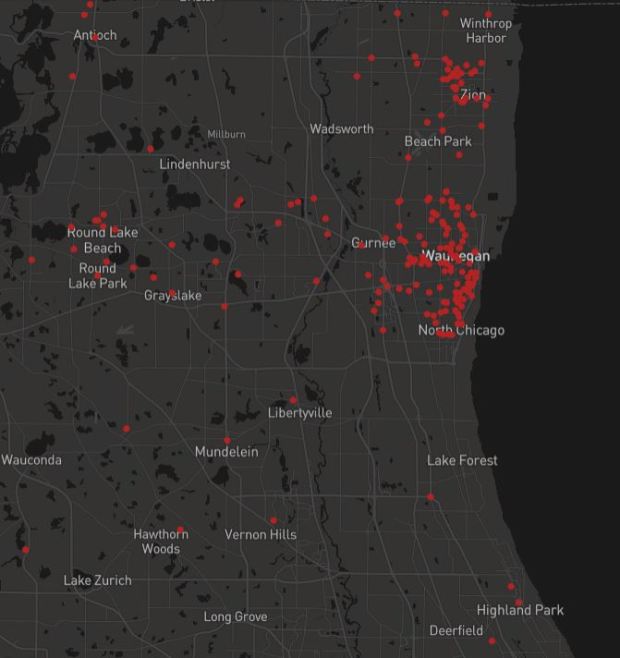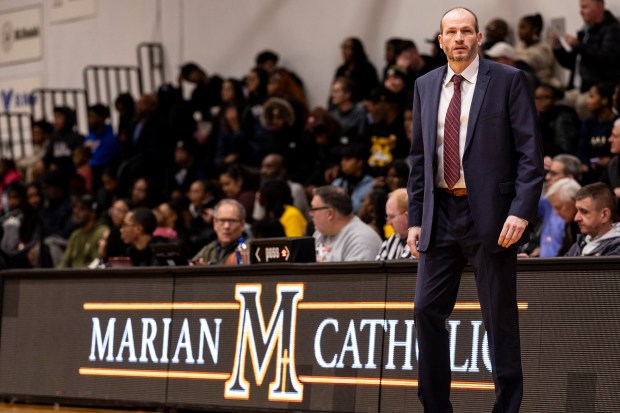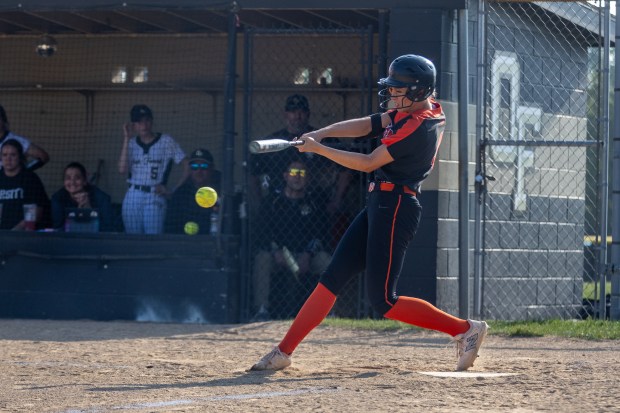An agency within the State’s Attorney’s Office — the Gun Violence Prevention Initiative (GVPI) — has released a strategic plan to reduce and prevent gun violence in Lake County.
The first of its kind for the county, the Violence Prevention Plan (VPP) consists of goals with outcomes to measure achievement, includes feedback from community stakeholders and offers data on where gun violence is occurring in the county, along with some contributing factors.
“Prevention work fulfills our moral duty to help others – whether it is survivors in need of trauma-related services, domestic violence survivors in need of red flag laws, or youth in need of mentoring services,” State’s Attorney Eric Rinehart said as part of the plan.
The violence prevention plan is also a form of accountability, according to GVPI Director Tierra Lemon.
“Being able to have that strategic plan, having something that people can look at … people don’t have to wonder, ‘Hmm, I wonder what the GVPI is up to?’” Lemon said. “We want the community to be aware of the goals that we’re trying to achieve so that they can hold us accountable to them, and so they can support us.”
Since November, the GVPI has hosted a number of town halls around the county that helped inform the violence prevention plan. Lemon said the community events were critical for distributing surveys and hosting listening sessions.
“This work is a community effort, and this plan belongs to the community,” Lemon said. “It’s the reason why (the GVPI) spent so much time trying to get in front of the community, and trying to see what they would like to see from us.”
Mapping gun violence
According to the prevention plan, the majority of gun violence in Lake County is concentrated in Waukegan, North Chicago and Zion. In 2023, 65% of firearm homicides in the county occurred in those three cities, according to the GVPI.
These communities have had the highest levels of gun violence in the county due to, “decades of chronic disinvestment and systemic racism,” the report stated.
Nearly 40% of residents from Waukegan, Zion and North Chicago – considered a targeted community by the GVPI because of relatively high levels of daily gun violence – reported feeling unsafe in their community as it relates to gun violence, according to a survey distributed by GVPI.
Of all Lake County residents, only 18% reported feeling unsafe in their community due to gun violence. More than 350 Lake County residents responded to the survey, the majority coming from Waukegan, then Libertyville, Highland Park, Gurnee, Lake Bluff and North Chicago.
In the target communities, 83% of respondents said they are worried about the current level of gun violence in their community, compared to 51% of all county residents.
Lemon said she suspects most of the survey respondents also attended a town hall meeting. Surveys were also distributed on social media and by GVPI’s community partners, so Lemon said there were other ways to participate.
“Next time that we do something like this, our ultimate goal is to expand the reach, because we do realize that this is a small sample size of Lake County,” she said.
When asked to rank types of gun violence by primary concern, over half of all survey respondents selected everyday violence as their first choice, followed by mass shootings, domestic violence, firearm suicide and lastly, unintentional shootings.
The primary difference between responses from residents living outside of targeted communities and the rest of the county was that non-targeted community residents ranked mass shootings higher than everyday gun violence, the report noted.
“It’s based on what people’s experiences have been thus far as it relates to gun violence,” Lemon said. “Our respondents in Highland Park were more likely to say that they’re more concerned about mass shootings because this has been their reality.
“As opposed to somewhere in Waukegan or North Chicago, where community violence is more prevalent … it makes more sense for them to be more concerned about the things that they’re faced with on a daily basis,” she said.
Identifying risks
Gun homicides in Lake County, which include firearm murders, reckless firearm homicides and officer-involved shootings, declined by 41% between 2022 and 2023, according to the GVPI’s report.
When excluding the deaths from the Highland Park mass shooting, the decline is still greater than 35%, the report continued.
The reduction in homicides in 2023 aligns with the launch of Lake County Peacemakers, a community violence intervention team focused on reducing and preventing everyday gun violence in Waukegan, Zion, and North Chicago.
While Lemon said the decrease cannot be definitively tied to the work of the Peacemakers, the achievement is the “work of the whole community.”
Violence prevention, however, is not always going to look like a reduction in homicides, she said.
“Sometimes, it’s going to look like an implementation and programs. Sometimes it’s going to look like collaboration and community,” Lemon said.
The goals of the prevention plan are strategic and include measure outcomes to document successes by the GVPI. Some outcomes include developing a hotline for the public and law enforcement to request information on firearm restraining orders, and distributing secure-storage locking devices at no cost to residents.
Identifying and addressing root causes of gun violence is paramount to approaching gun violence prevention, according to the Violence Prevention Plan.
Easy access to firearms by high-risk people, or children and those looking to harm themselves or others, was the most commonly selected root cause in a survey distributed to over 300 Lake County residents, with over 75% of respondents mentioning access in the survey.
Other root causes of gun violence that are top of mind for community members are lack of mental health support services, poverty, systemic racism and cycles of retaliation.
Goals outlined in the VPP to address causes and risks include expanding youth engagement with GVPI programming, develop a resource ecosystem for residents, expand victim services and community violence intervention, increase opportunities for restorative justice and address extreme-risk individuals.
In the coming months, the GVPI will also grow in size and scope, according to the VPP, adding a gun violence prevention specialist focused on a safe firearm storage campaign and increasing awareness around firearm restraining orders and clear and present danger reports. The agency also plans to hire a part-time therapist and a victim support specialist to build out the victim services team, the plan said.
chilles@chicagotribune.com





